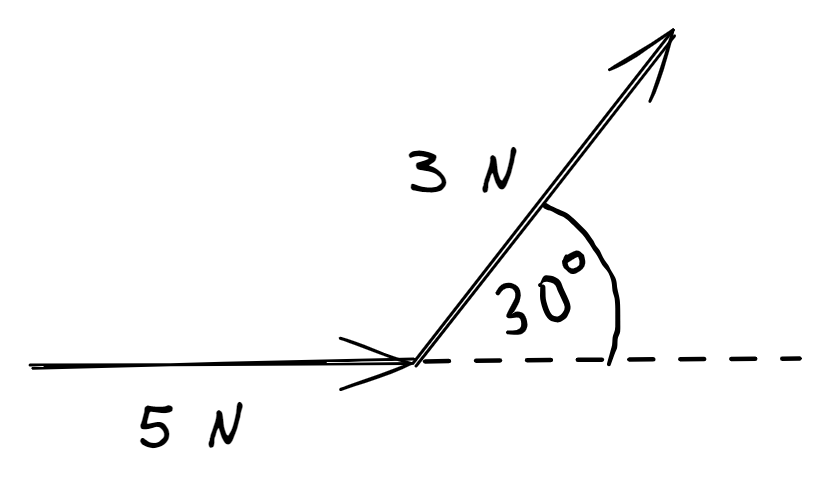Now that we can split oblique vectors into horizontal and vertical components it is essential that we understand that horizontal vectors are independent of vertical vectors. This statement implies that, for example, an object’s displacement along the x axis cannot give us meaningful information on its displacement along the y axis.
The displacement’s horizontal component is independent of (does not affect/is not affected by) its vertical displacement. Thus if the object is pushed along the x axis its horizontal displacement changes but its vertical displacement does not.
Resultant vector
A resultant vector is a vector that can be used to replace any collection/system of vectors. Finding the resultant vector (combining many vectors into one) can be seen as the opposite of resolving vectors (splitting one vector into many (specifically two perpendicular ones)).
Easy steps to find the resultant of any system of vectors (even for 100+ vectors)
- Resolve any oblique vectors into their horizontal and vertical components (at the end of this step there will be only horizontal and vertical vectors)
- Assign positive and negative signs to the vectors based on the sign convention
- Add all horizontal vectors to produce a single net horizontal vector
- Add all vertical vectors to produce a single net vertical vector (at the end of this step there will be only one horizontal vector and one vertical vector)
- Combine these two net vectors using Pythagoras’ theorem to obtain the magnitude and the tangent ratio ($tan(\theta)=\frac{y}{x}$) to obtain the angle/direction




